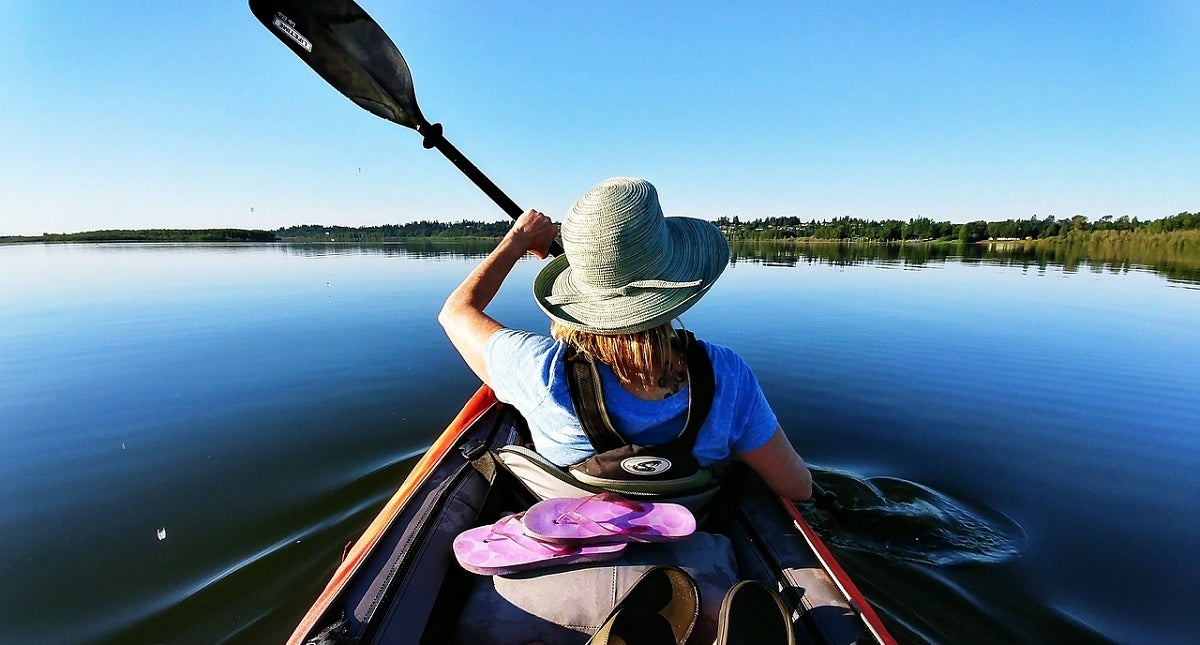
Our Editors independently research, test, and rate what we feel are the best products. We use affiliate links and may receive a small commission on purchases.
When it comes to outdoor hobbies, one of the most popular things that come to mind is Kayaking or paddle boarding. Things like paddle boards, kayaks, and canoes are things that offer people a range of calm fun on the water and are relatively easy to use.
Now before you go jumping into the river with your kayak there are a few things you need to know as far as safety goes. Here are a few things to keep in mind when you head out onto the waters.
Wear your life jacket
You need to be ready to capsize and swim at times. The temperature of the waters can open the doors for things like hypothermia and even worse drowning. Even if you are a top notch swimmer you are still required by law to wear your life jacket.
Carry something that makes a lot of noise
This is so if you find yourself in some trouble, you will be able to blow the whistle that has been approved by the US Coast Guard for much longer than you can scream and holler.
Make a float plan
It is not a bad idea, if you will be going paddling for a few hours, to let someone know where you plan to be and what time you plan to be back. If you plan for a longer trip then you should leave a float plan with your friend, marina, or someone you trust deeply.
The float plan needs to include what your vessel looks like, who is all on board, what the safety equipment looks like that you are carrying, and where and when you expect to reach your destination.
The person holding the float plan should be instructed to notify the Coast Guard or another appropriate agency if something goes wrong and you have not returned within a reasonable time. If your plans change then you need to notify the person with the plan as soon as possible.
Know your limits
Make the best choices you can before venturing out on a kayak and make sure you know your own limits. Do not try to push past your limits especially if it is your first water vessel adventure.
Get educated
A little bit of knowledge about paddling and boat safety in general can reduce accidents and possible fatalities tremendously. Make sure that everyone on the boat is educated before they get on the water.
Conditions for vessel traffic, weather, and water
Things like operator skill, vessel traffic, tides, sun, waves, temperatures, and wind play a bigger role than you may think. Be aware of all weather and safety conditions. To operate your vessel in a responsible and safe way you need to be mindful of other motorboats.
The best way to do this is to travel behind one another if you are in a group rather than side by side. This makes it to where everyone can get where they are going without running into each other.
Vessel safety
When it comes to all your equipment, like your roof rack cross bars, the hull, deck, paddle, oar, and many other items, you need to make sure they are working like they need to be. You also will need to know the mandatory requirements for your vessels safety. You can find these in the owner’s manual.
Leash for your paddle board or kayak
For things like your paddleboard or kayak there are different kinds of leashes to keep your paddles from being swept away by the water currents. Also with a paddle board, a simple leash will keep it attached to you so if you fall off you won’t be up salt creek without a paddle.
Have a water voice
Sound will carry across water really well, so when you are talking with your group be mindful of your volume.
